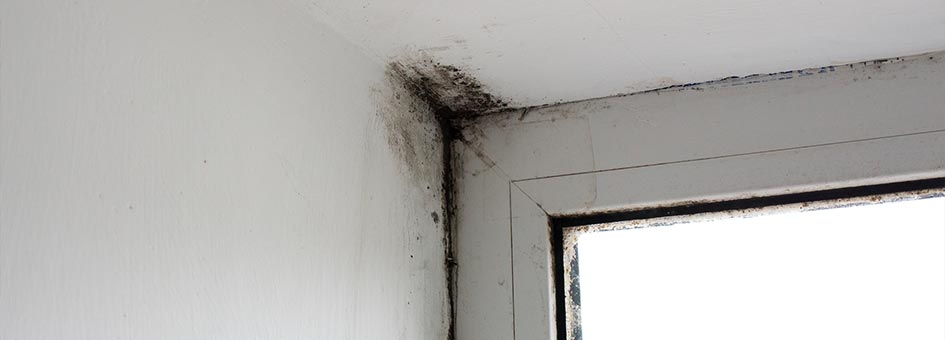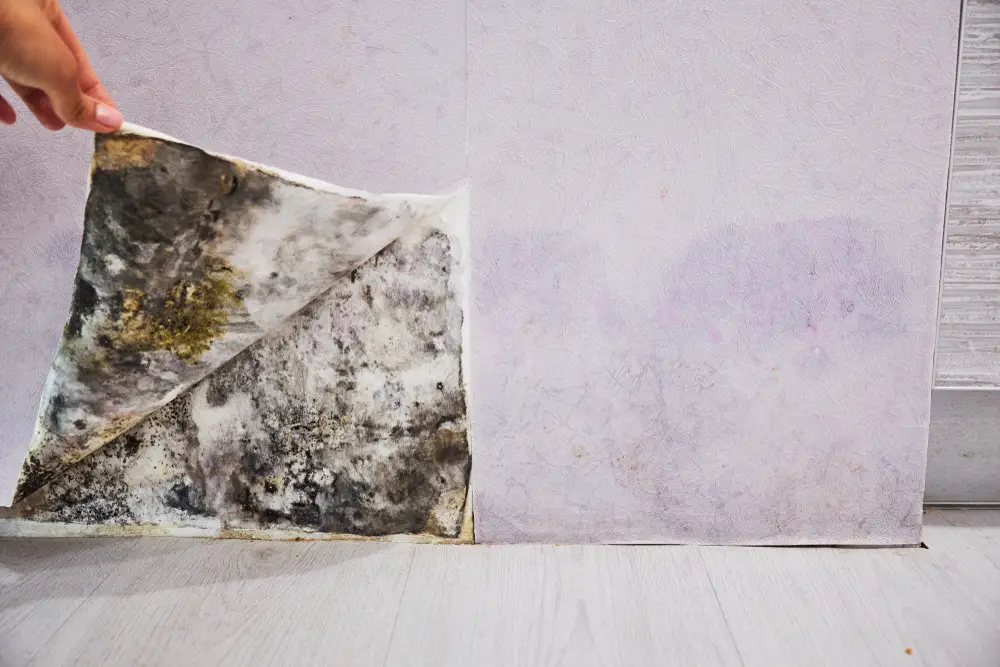Imagine living in a cozy home, with walls that protect you from the outside world. You feel safe and secure, but what if there is something lurking behind those seemingly sturdy walls? Could mold, quietly growing behind your drywall, actually be affecting your health? In this article, we explore the potential risks and consequences of mold presence behind drywall, and how it can impact you and your well-being. Discover the signs, symptoms, and steps you can take to protect yourself from this hidden threat.

Understanding Mold and its Effects
What is Mold?
Mold is a type of fungus that grows in moist and humid environments. It thrives in places with limited ventilation and excessive moisture. Mold reproduces through small spores that can easily spread through the air.
Common Types of Mold
There are various types of mold, but some of the most commonly found molds behind drywall include black mold (Stachybotrys chartarum), green mold (Aspergillus), and white mold (Penicillium). Each type of mold has its own characteristics and potential health risks.
Health Effects of Mold Exposure
Exposure to mold can have significant health effects. Mold spores can trigger allergic reactions, such as sneezing, coughing, and skin irritation. For individuals with asthma or other respiratory conditions, mold exposure can exacerbate symptoms, leading to difficulty breathing and wheezing. Prolonged exposure to mold can also weaken the immune system, making individuals more susceptible to infections.
Detecting Mold Behind Drywall
Signs of Mold Growth
Detecting mold growth behind drywall can be challenging since it is often hidden from view. However, there are a few signs that may indicate its presence. These include a musty odor, visible water stains, discoloration on the walls, or the presence of mold on other surfaces, such as furniture or clothing.
Causes of Mold Behind Drywall
Mold behind drywall typically occurs due to excess moisture. This can be caused by various factors, including water leaks, plumbing issues, high humidity levels, or improper ventilation. It is essential to identify and address the underlying cause to prevent further mold growth.
Professional Mold Inspection
If you suspect mold behind your drywall, it is advisable to seek professional help for a thorough mold inspection. Certified mold inspectors can use advanced techniques to detect hidden mold, such as infrared cameras and moisture meters. Their expertise ensures a proper assessment of the extent of the mold damage.

Health Risks Associated with Mold Behind Drywall
Respiratory Issues
Exposure to mold behind drywall can lead to respiratory issues, such as coughing, wheezing, and shortness of breath. Mold spores can irritate the respiratory tract and exacerbate existing respiratory conditions, making it difficult for individuals to breathe properly.
Allergies
Many people are allergic to mold, and exposure can trigger allergic reactions. Common symptoms of mold allergies include sneezing, runny nose, itchy and watery eyes, and skin rashes. Individuals with mold allergies need to be cautious and minimize their exposure to mold-infested environments.
Infections
Mold can also cause infections in individuals with weakened immune systems or those who have existing respiratory conditions. Aspergillus, a type of mold commonly found behind drywall, can cause serious lung infections, especially in individuals with compromised immune systems.
Toxic Reactions
Certain molds, such as black mold, can produce mycotoxins that are harmful to humans. Prolonged exposure to these mycotoxins can lead to severe health issues, including neurological symptoms, respiratory problems, and even organ damage. It is crucial to address mold growth behind drywall promptly to prevent such toxic reactions.
Preventing Mold Growth Behind Drywall
Proper Ventilation and Moisture Control
One of the most effective ways to prevent mold growth behind drywall is to ensure proper ventilation and control moisture levels. Use exhaust fans in bathrooms and kitchens to remove excess moisture. Additionally, opening windows and using dehumidifiers can help maintain optimal humidity levels.
Routine Maintenance and Inspections
Regular maintenance and inspections are essential to identify and address any potential sources of moisture. Repair any plumbing leaks, fix roof leaks, and ensure that gutters and downspouts are functioning correctly. Regularly inspect the areas behind drywall to catch any signs of water damage or mold growth early on.
Quickly Addressing Water Damage
Promptly addressing any water damage is crucial in preventing mold growth behind drywall. In the event of a water leak or flooding, it is essential to dry the affected area within 24-48 hours. Use fans, dehumidifiers, and remove any wet materials to prevent moisture accumulation and mold growth.
Proper Use of Drywall Materials
When installing or replacing drywall, it is vital to use materials that are resistant to moisture and mold. Moisture-resistant drywall, also known as green board or cement board, can help prevent mold growth. Additionally, applying mold-resistant paints or coatings can provide an extra layer of protection.

Removing Mold Behind Drywall
Do It Yourself (DIY) Methods
If the mold growth is minimal and confined to a small area, you may attempt to remove it yourself. However, it is crucial to take necessary precautions to protect yourself during the process. Wear protective clothing, gloves, and a mask to prevent inhalation of mold spores. Use a mixture of bleach and water or a commercial mold cleaning solution to scrub the affected area thoroughly.
Professional Mold Remediation
For extensive mold growth or if you are unsure about the proper removal process, it is highly recommended to hire professional mold remediation services. Certified mold remediation experts have the knowledge, experience, and specialized equipment to safely and effectively remove mold behind drywall. They will ensure proper containment, removal, and disposal of mold-infested materials.
Legal and Insurance Considerations
Responsibility for Mold Removal
Determining responsibility for mold removal can be complex. In some cases, the responsibility lies with the homeowner, especially if the mold growth is a result of negligence or failure to maintain the property adequately. However, if the mold growth is due to a structural issue or faulty construction, the responsibility may fall on contractors or builders.
Insurance Coverage for Mold Damage
Whether or not mold damage is covered by insurance can vary depending on the circumstances, insurance policy, and coverage limits. Some insurance policies may cover mold removal if it is a result of a covered peril, such as a burst pipe. Review your insurance policy or consult with your insurance provider to understand the extent of coverage for mold-related damage.
Filing Claims for Mold Removal
If you have experienced mold growth behind your drywall and believe it is covered by your insurance policy, you should file a claim promptly. Document the damage with photographs, keep records of any expenses related to mold removal, and provide any necessary documentation requested by your insurance company. Consulting with a public adjuster or an attorney specializing in mold claims can help navigate the claims process.

Conclusion
Mold growth behind drywall can have significant implications for your health and property. Understanding the causes, signs, and health risks associated with mold is crucial for early detection and prevention. By implementing proper moisture control, routine maintenance, and promptly addressing water damage, you can minimize the risk of mold growth behind drywall. If faced with severe mold growth or legal/insurance considerations, it is advisable to seek professional assistance. Remember, your health and well-being are worth prioritizing when it comes to dealing with mold behind drywall.